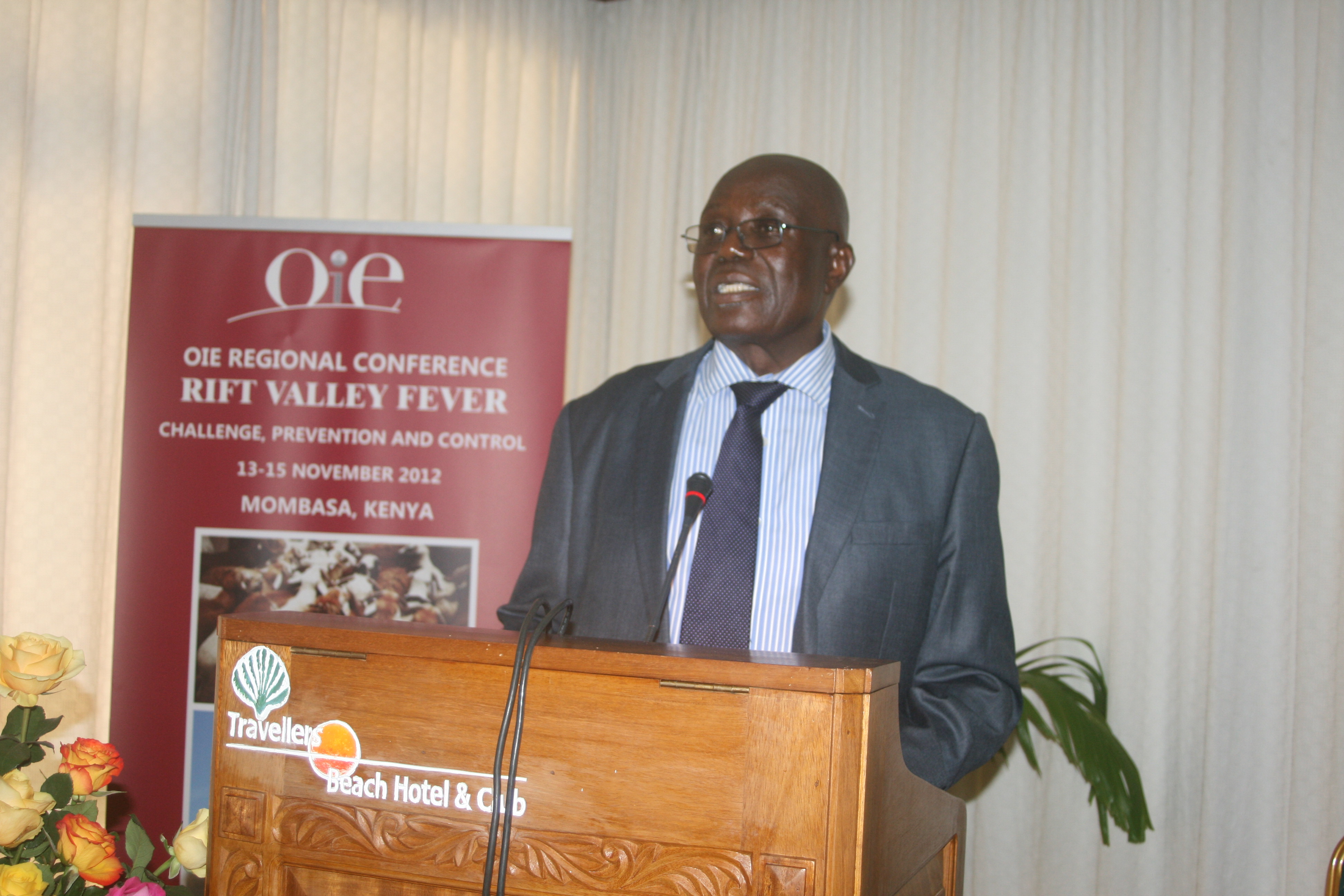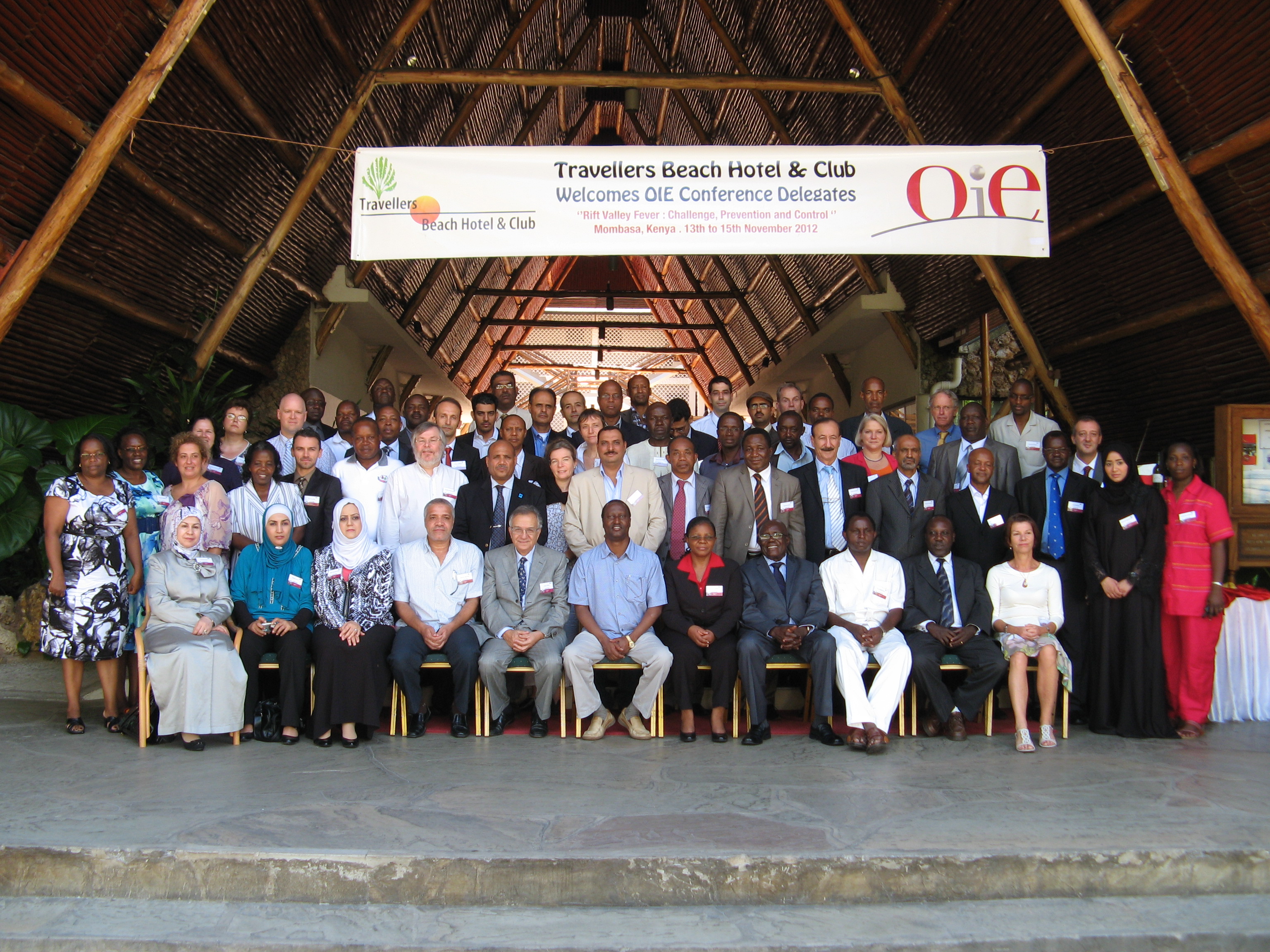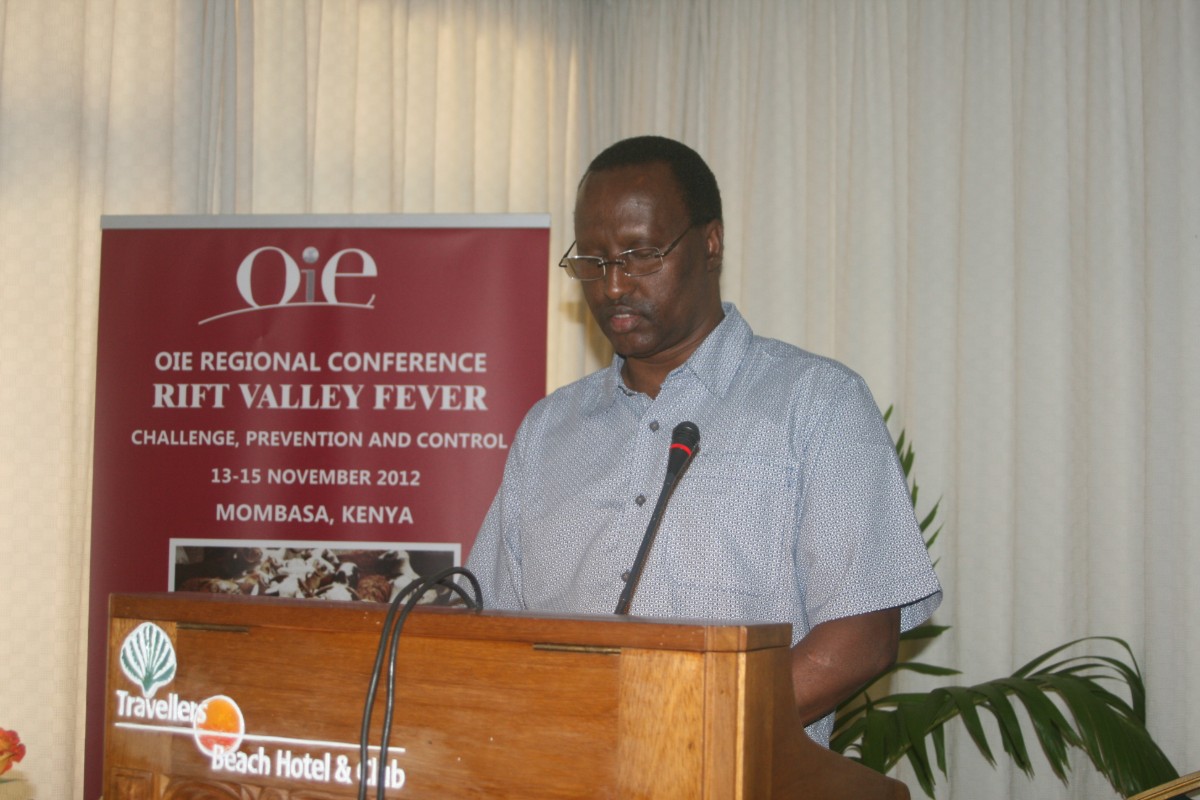
Under the auspices of the FAO & OIE Global Framework for the progressive control of Trans-boundary Animal Diseases (GF-TADs), some 70 veterinary professionals and scientists met in Mombasa, Kenya, from November 13 ? 15th to reassess the situation of Rift Valley Fever (RVF) in the area around the Red Sea and the Indian Ocean : it’s challenges and options for prevention and control. The seminar was attended by representatives from 18 countries including Bahrain, Djibouti, Egypt, Ethiopia, Iraq, Jordan, Kenya, Kuwait, Lebanon, Madagascar, Qatar, Saudi Arabia, Somalia (FAO), South Sudan, Sudan, Tanzania, Uganda and Yemen.
The conference was officially opened by the Kenyan Minister of Livestock Development, Hon. Dr. Mohamed Abdi Kuti. Participants discussed the current state of Rift Valley fever in the Middle East and the Horn of Africa, its impact on trade between the two regions and reviewed recommendations from previous seminars and conferences. The focus of the conference was to debate the use of new prevention and control tools, presented by technical experts from both the public and private institutions.
Minister of Livestock Development, Hon. Dr. Mohamed Abdi Kuti. Picture (c) P. Bastiaensen (oie) 2012.
New vaccines, diagnostic tools and early warning and rapid response models were discussed. Inputs into the meeting were provided by regional organisations such as AU-IBAR, AU-PANVAC and the Inter-Governmental Authority on Development (IGAD), along with speakers from international organisations such as FAO, OIE and ILRI, and private and public stakeholders in research and trade, such as CDC (US), CIRAD (France), the University of Liège (Belgium), IZS (Italy), GALVmed (United Kingdom), MSD Animal Health (Netherlands), MERIAL (France), OBP (South Africa), KEVEVAPI (Kenya), USDA-APHIS, USAID, NASA (US), IFAH (Belgium), etc
All pictures (c) P. Bastiaensen (oie) 2012, unless mentioned otherwise.



